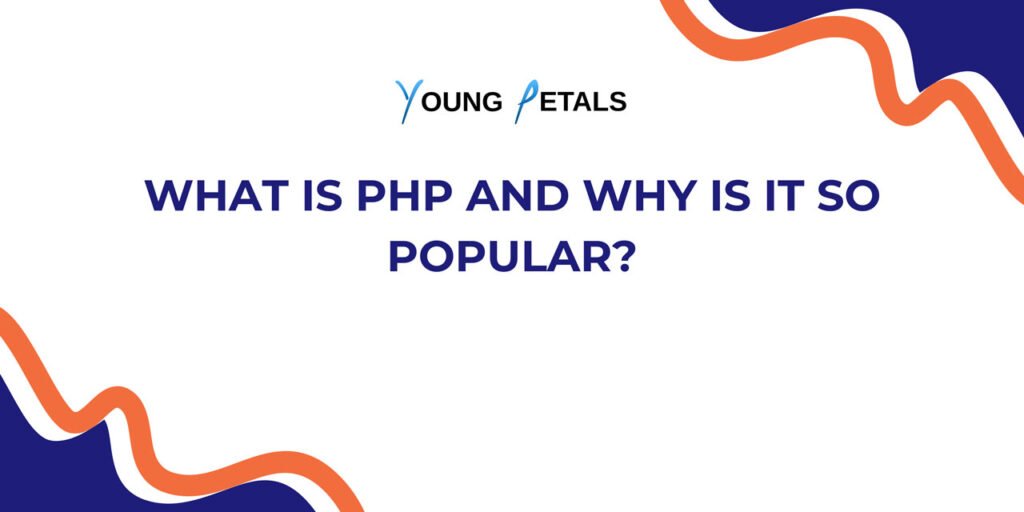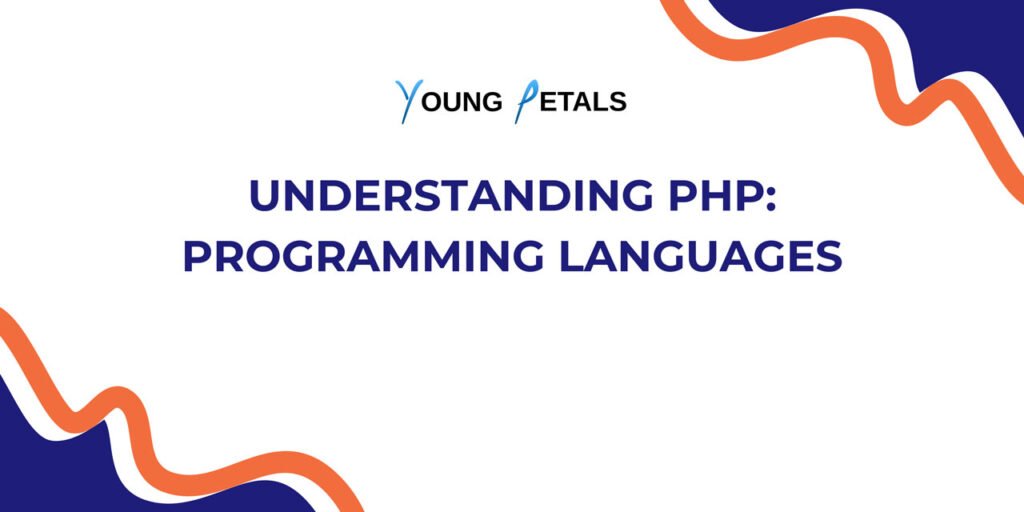Are you ready to dive into the world of web development? PHP (PHP: Hypertext Preprocessor) is one of the most popular server-side scripting languages that powers over 78% of websites worldwide, including giants like Facebook, WordPress, and Wikipedia. In this comprehensive tutorial, you’ll learn the fundamentals of PHP programming in just 30 minutes, giving you the foundation to start building dynamic web applications.
What is PHP and Why Should You Learn It?
PHP is a server-side scripting language designed specifically for web development. Unlike HTML and CSS which run in the browser, PHP code executes on the web server before sending the final result to the user’s browser. This means you can create dynamic content, interact with databases, handle user input, and build complex web applications.
Think of PHP as the engine behind the scenes of a restaurant kitchen. While customers (web browsers) only see the finished dish (HTML page), PHP is working behind the scenes to prepare ingredients (process data), follow recipes (execute code), and deliver the final meal (dynamic web content).
Key Benefits of Learning PHP
PHP offers several compelling advantages for beginners entering web development. The language features a gentle learning curve with syntax that closely resembles English, making it accessible to newcomers. PHP also boasts an enormous community of developers worldwide, ensuring you’ll find abundant tutorials, documentation, and support when you need help.
From a practical standpoint, PHP developers enjoy strong job market demand, as countless businesses rely on PHP-powered websites and applications. The language also provides free access to powerful tools and frameworks, allowing you to build professional-grade applications without expensive licensing fees.
Setting Up Your PHP Development Environment
Before we start coding, you need a local development environment where PHP can run. PHP requires a web server to execute properly, since it’s a server-side language.
Installing PHP Locally
The easiest way to get started is by installing a complete development package that includes PHP, a web server, and a database system. XAMPP (Cross-platform, Apache, MySQL, PHP, and Perl) is the most popular choice for beginners because it bundles everything you need into one simple installer.
Download XAMPP from the official website and follow the installation wizard for your operating system. Once installed, start the Apache web server from the XAMPP control panel. This creates a local server environment where you can run PHP files by placing them in the “htdocs” folder within your XAMPP directory.
To verify your installation works correctly, create a simple test file called “info.php” in the htdocs folder with this content:
<?php
phpinfo();
?>
Navigate to “http://localhost/info.php” in your web browser. If you see a detailed page showing PHP configuration information, congratulations! Your PHP environment is ready for development.
PHP Syntax Fundamentals
Understanding PHP syntax is like learning the grammar rules of a new language. Every PHP script begins with an opening tag and typically ends with a closing tag, though the closing tag can be omitted in files containing only PHP code.
Basic PHP Tags and Structure
PHP code must be enclosed within special tags that tell the web server to process the content as PHP rather than plain HTML. The standard opening tag is “<?php” and the closing tag is “?>”. Here’s how a basic PHP file looks:
<?php
// This is a PHP comment
echo "Hello, World!"; // This line outputs text to the browser
?>
Notice that PHP statements end with semicolons, similar to many other programming languages. Comments can be added using double slashes for single-line comments or /* */ for multi-line comments, helping you document your code for future reference.
Embedding PHP in HTML
One of PHP’s greatest strengths is its seamless integration with HTML. You can mix PHP code directly within HTML documents, allowing you to create dynamic content that adapts based on user input or database information:
<!DOCTYPE html>
<html>
<head>
<title>Dynamic Web Page</title>
</head>
<body>
<h1><?php echo "Welcome to My Website!"; ?></h1>
<p>Today's date is: <?php echo date('Y-m-d'); ?></p>
</body>
</html>
This example demonstrates how PHP can generate dynamic content within static HTML structure. The date() function automatically displays the current date, ensuring your webpage always shows up-to-date information.
Working with Variables and Data Types
Variables in PHP are like labeled containers that store different types of information. Understanding how to create and manipulate variables forms the foundation of all PHP programming.
Creating and Using Variables
PHP variables always start with a dollar sign ($) followed by the variable name. Variable names are case-sensitive and should start with a letter or underscore, followed by any combination of letters, numbers, and underscores:
<?php
// String variables store text
$username = "John Doe";
$email = "john@example.com";
// Numeric variables store numbers
$age = 25;
$price = 19.99;
// Boolean variables store true/false values
$isLoggedIn = true;
$hasPermission = false;
// Displaying variables
echo "User: " . $username . "<br>";
echo "Age: " . $age . " years old<br>";
echo "Price: $" . $price;
?>
The concatenation operator (.) joins strings together, allowing you to combine text and variables to create meaningful output. PHP automatically handles type conversion in many situations, making it forgiving for beginners.
Understanding PHP Data Types
PHP supports several built-in data types that serve different purposes in your applications. Strings hold textual information like names, addresses, or any sequence of characters. Integers represent whole numbers, while floats (also called doubles) handle decimal numbers for precise calculations.
Booleans store simple true or false values, perfect for flags and conditional logic. Arrays act as ordered lists that can hold multiple values under a single variable name, and objects represent more complex data structures created from classes.
Here’s a practical example showing different data types in action:
<?php
// String example - storing user input
$productName = "Wireless Headphones";
// Integer example - counting items
$quantity = 3;
// Float example - pricing calculation
$unitPrice = 89.99;
$totalPrice = $quantity * $unitPrice;
// Boolean example - checking availability
$inStock = true;
// Array example - storing multiple values
$colors = array("Black", "White", "Blue", "Red");
// Displaying results with proper formatting
echo "<h2>Product Details</h2>";
echo "Product: " . $productName . "<br>";
echo "Quantity: " . $quantity . "<br>";
echo "Unit Price: $" . number_format($unitPrice, 2) . "<br>";
echo "Total Price: $" . number_format($totalPrice, 2) . "<br>";
echo "In Stock: " . ($inStock ? "Yes" : "No") . "<br>";
echo "Available Colors: " . implode(", ", $colors);
?>
Control Structures: Making Decisions and Loops
Control structures allow your PHP programs to make decisions and repeat actions, transforming static code into intelligent, responsive applications.
Conditional Statements (If, Else, Elseif)
Conditional statements work like decision trees in real life. Just as you might decide what to wear based on the weather, PHP uses if-else statements to execute different code blocks based on specific conditions:
<?php
$temperature = 75;
$isRaining = false;
// Simple if statement
if ($temperature > 70) {
echo "It's a warm day!<br>";
}
// If-else statement
if ($isRaining) {
echo "Don't forget your umbrella!<br>";
} else {
echo "Enjoy the nice weather!<br>";
}
// Multiple conditions with elseif
if ($temperature < 32) {
$weather = "freezing";
$clothing = "heavy coat and gloves";
} elseif ($temperature < 60) {
$weather = "cool";
$clothing = "light jacket";
} elseif ($temperature < 80) {
$weather = "comfortable";
$clothing = "t-shirt";
} else {
$weather = "hot";
$clothing = "shorts and tank top";
}
echo "The weather is " . $weather . ". Consider wearing " . $clothing . ".";
?>
Switch Statements for Multiple Conditions
When you need to compare a single variable against many possible values, switch statements provide a cleaner alternative to long chains of if-elseif statements:
<?php
$dayOfWeek = date('w'); // Returns 0 (Sunday) through 6 (Saturday)
switch ($dayOfWeek) {
case 0:
$message = "Relax, it's Sunday!";
break;
case 1:
$message = "Monday blues, but you got this!";
break;
case 5:
$message = "TGIF! Weekend is almost here!";
break;
case 6:
$message = "Saturday fun day!";
break;
default:
$message = "Have a great day!";
break;
}
echo $message;
?>
Loops for Repetitive Tasks
Loops handle repetitive tasks efficiently, like processing lists of data or generating multiple HTML elements. The for loop works best when you know exactly how many times to repeat an action:
<?php
// For loop - creating a multiplication table
echo "<h3>Multiplication Table for 5:</h3>";
for ($i = 1; $i <= 10; $i++) {
$result = 5 * $i;
echo "5 × " . $i . " = " . $result . "<br>";
}
// While loop - processing until a condition is met
$countdown = 5;
echo "<h3>Countdown:</h3>";
while ($countdown > 0) {
echo $countdown . "... ";
$countdown--;
}
echo "Blast off!<br>";
// Foreach loop - iterating through arrays
$fruits = array("apple", "banana", "orange", "grape");
echo "<h3>Available Fruits:</h3>";
foreach ($fruits as $fruit) {
echo "• " . ucfirst($fruit) . "<br>";
}
?>
Working with Arrays: Storing Multiple Values
Arrays are like digital filing cabinets that organize related information under a single variable name. They’re essential for managing collections of data in PHP applications.
Creating and Manipulating Arrays
PHP offers flexible ways to create and work with arrays. You can create indexed arrays where elements are numbered automatically, or associative arrays where you assign meaningful keys to each value:
<?php
// Indexed array - elements accessed by numeric position
$fruits = array("apple", "banana", "orange");
// Alternative syntax (PHP 5.4+)
$vegetables = ["carrot", "broccoli", "spinach"];
// Associative array - elements accessed by custom keys
$student = array(
"name" => "Sarah Johnson",
"age" => 20,
"major" => "Computer Science",
"gpa" => 3.8
);
// Adding elements to arrays
$fruits[] = "grape"; // Adds to end of indexed array
$student["email"] = "sarah@university.edu"; // Adds new key-value pair
// Accessing array elements
echo "First fruit: " . $fruits[0] . "<br>";
echo "Student name: " . $student["name"] . "<br>";
echo "Student GPA: " . $student["gpa"] . "<br>";
// Getting array information
echo "Number of fruits: " . count($fruits) . "<br>";
echo "All student info: " . print_r($student, true);
?>
Multi-dimensional Arrays
Multi-dimensional arrays store arrays within arrays, perfect for representing complex data structures like tables or nested categories:
<?php
// Two-dimensional array representing a product catalog
$products = array(
array(
"name" => "Laptop",
"price" => 999.99,
"category" => "Electronics"
),
array(
"name" => "T-Shirt",
"price" => 19.99,
"category" => "Clothing"
),
array(
"name" => "Coffee Mug",
"price" => 12.50,
"category" => "Home"
)
);
// Displaying products in a formatted table
echo "<table border='1'>";
echo "<tr><th>Product</th><th>Price</th><th>Category</th></tr>";
foreach ($products as $product) {
echo "<tr>";
echo "<td>" . $product["name"] . "</td>";
echo "<td>$" . number_format($product["price"], 2) . "</td>";
echo "<td>" . $product["category"] . "</td>";
echo "</tr>";
}
echo "</table>";
?>
Functions: Creating Reusable Code Blocks
Functions are like recipes in cooking – they contain a set of instructions that you can use repeatedly whenever needed. They help organize your code and eliminate repetition.
Built-in PHP Functions
PHP provides hundreds of built-in functions that handle common tasks. Learning to use these functions effectively saves time and ensures your code follows best practices:
<?php
// String functions
$text = " Hello, World! ";
echo "Original: '" . $text . "'<br>";
echo "Trimmed: '" . trim($text) . "'<br>";
echo "Uppercase: " . strtoupper($text) . "<br>";
echo "Length: " . strlen(trim($text)) . " characters<br>";
// Math functions
$numbers = [3.7, 8.2, 5.1, 9.8];
echo "Numbers: " . implode(", ", $numbers) . "<br>";
echo "Sum: " . array_sum($numbers) . "<br>";
echo "Average: " . round(array_sum($numbers) / count($numbers), 2) . "<br>";
echo "Minimum: " . min($numbers) . "<br>";
echo "Maximum: " . max($numbers) . "<br>";
// Date functions
echo "Current date: " . date("F j, Y") . "<br>";
echo "Current time: " . date("g:i A") . "<br>";
echo "Next week: " . date("F j, Y", strtotime("+1 week"));
?>
Creating Custom Functions
Custom functions let you package useful code into reusable blocks. Think of them as creating your own tools for specific jobs:
<?php
// Simple function without parameters
function displayWelcome() {
return "<h2>Welcome to our website!</h2>";
}
// Function with parameters and return value
function calculateTax($price, $taxRate = 0.08) {
$taxAmount = $price * $taxRate;
$totalPrice = $price + $taxAmount;
return $totalPrice;
}
// Function with multiple parameters
function createEmailTemplate($name, $subject, $message) {
$template = "
<div style='border: 1px solid #ccc; padding: 20px; margin: 10px;'>
<h3>Email to: " . $name . "</h3>
<h4>Subject: " . $subject . "</h4>
<p>" . $message . "</p>
<hr>
<small>Sent on: " . date('Y-m-d H:i:s') . "</small>
</div>";
return $template;
}
// Using the functions
echo displayWelcome();
$itemPrice = 50.00;
$finalPrice = calculateTax($itemPrice);
echo "Item price: $" . number_format($itemPrice, 2) . "<br>";
echo "Price with tax: $" . number_format($finalPrice, 2) . "<br><br>";
$emailHTML = createEmailTemplate(
"John Doe",
"Welcome to Our Service",
"Thank you for signing up! We're excited to have you on board."
);
echo $emailHTML;
?>
Handling Forms and User Input
Web applications become interactive when they can receive and process user input through HTML forms. PHP excels at handling form data securely and efficiently.
Processing Form Data
When users submit forms, PHP receives the data through superglobal arrays like $_POST and $_GET. Understanding how to safely process this data is crucial for building secure applications:
<?php
// Check if form was submitted
if ($_POST) {
// Retrieve and sanitize form data
$name = htmlspecialchars(trim($_POST['name']));
$email = htmlspecialchars(trim($_POST['email']));
$message = htmlspecialchars(trim($_POST['message']));
// Basic validation
$errors = array();
if (empty($name)) {
$errors[] = "Name is required.";
}
if (empty($email) || !filter_var($email, FILTER_VALIDATE_EMAIL)) {
$errors[] = "Valid email address is required.";
}
if (empty($message)) {
$errors[] = "Message cannot be empty.";
}
// Display results
if (empty($errors)) {
echo "<div style='color: green; padding: 10px; border: 1px solid green;'>";
echo "<h3>Thank you for your message!</h3>";
echo "<p><strong>Name:</strong> " . $name . "</p>";
echo "<p><strong>Email:</strong> " . $email . "</p>";
echo "<p><strong>Message:</strong> " . nl2br($message) . "</p>";
echo "</div>";
} else {
echo "<div style='color: red; padding: 10px; border: 1px solid red;'>";
echo "<h3>Please correct the following errors:</h3>";
foreach ($errors as $error) {
echo "<p>• " . $error . "</p>";
}
echo "</div>";
}
}
?>
<!-- HTML form -->
<form method="post" action="">
<h2>Contact Us</h2>
<p>
<label for="name">Your Name:</label><br>
<input type="text" name="name" id="name" value="<?php echo isset($_POST['name']) ? htmlspecialchars($_POST['name']) : ''; ?>" style="width: 300px; padding: 5px;">
</p>
<p>
<label for="email">Email Address:</label><br>
<input type="email" name="email" id="email" value="<?php echo isset($_POST['email']) ? htmlspecialchars($_POST['email']) : ''; ?>" style="width: 300px; padding: 5px;">
</p>
<p>
<label for="message">Your Message:</label><br>
<textarea name="message" id="message" rows="5" style="width: 300px; padding: 5px;"><?php echo isset($_POST['message']) ? htmlspecialchars($_POST['message']) : ''; ?></textarea>
</p>
<p>
<input type="submit" value="Send Message" style="padding: 10px 20px; background: #007cba; color: white; border: none; cursor: pointer;">
</p>
</form>
Basic File Operations
PHP can read from and write to files on the web server, enabling you to store data, create logs, and build simple content management systems.
Reading and Writing Files
File operations in PHP follow a pattern of opening, processing, and closing files. PHP provides several functions that make file handling straightforward:
<?php
// Writing to a file
function saveVisitorLog($visitorInfo) {
$logFile = 'visitor_log.txt';
$timestamp = date('Y-m-d H:i:s');
$logEntry = $timestamp . " - " . $visitorInfo . "\n";
// Append data to file
if (file_put_contents($logFile, $logEntry, FILE_APPEND | LOCK_EX)) {
return "Log entry saved successfully.";
} else {
return "Error saving log entry.";
}
}
// Reading from a file
function displayVisitorLog() {
$logFile = 'visitor_log.txt';
if (file_exists($logFile)) {
$logContents = file_get_contents($logFile);
return "<pre>" . htmlspecialchars($logContents) . "</pre>";
} else {
return "No log file found.";
}
}
// Example usage
$visitorIP = $_SERVER['REMOTE_ADDR'];
$userAgent = $_SERVER['HTTP_USER_AGENT'];
$visitorData = "IP: " . $visitorIP . " | Browser: " . $userAgent;
echo saveVisitorLog($visitorData) . "<br><br>";
echo "<h3>Visitor Log:</h3>";
echo displayVisitorLog();
?>
Simple Database Connection with MySQL
Databases store and organize large amounts of information that your PHP applications can retrieve and manipulate. MySQL is the most popular database choice for PHP applications.
Connecting to MySQL Using PDO
PDO (PHP Data Objects) provides a secure, consistent way to work with databases. Here’s a practical example that demonstrates connection and basic operations:
<?php
// Database configuration
$host = 'localhost';
$dbname = 'tutorial_db';
$username = 'your_username';
$password = 'your_password';
try {
// Create PDO connection
$pdo = new PDO("mysql:host=$host;dbname=$dbname", $username, $password);
$pdo->setAttribute(PDO::ATTR_ERRMODE, PDO::ERRMODE_EXCEPTION);
echo "Database connected successfully!<br><br>";
// Create a simple table (run this once)
$createTable = "
CREATE TABLE IF NOT EXISTS users (
id INT AUTO_INCREMENT PRIMARY KEY,
name VARCHAR(100) NOT NULL,
email VARCHAR(100) UNIQUE NOT NULL,
created_at TIMESTAMP DEFAULT CURRENT_TIMESTAMP
)";
$pdo->exec($createTable);
// Insert sample data
$insertUser = $pdo->prepare("
INSERT INTO users (name, email)
VALUES (?, ?)
");
// Insert a user (with error handling for duplicates)
try {
$insertUser->execute(['John Doe', 'john@example.com']);
echo "User added successfully!<br>";
} catch (PDOException $e) {
if ($e->getCode() == 23000) { // Duplicate entry error
echo "User already exists!<br>";
}
}
// Retrieve and display users
$selectUsers = $pdo->query("SELECT * FROM users ORDER BY created_at DESC");
$users = $selectUsers->fetchAll(PDO::FETCH_ASSOC);
echo "<h3>Registered Users:</h3>";
echo "<table border='1' style='border-collapse: collapse;'>";
echo "<tr><th>ID</th><th>Name</th><th>Email</th><th>Registered</th></tr>";
foreach ($users as $user) {
echo "<tr>";
echo "<td>" . $user['id'] . "</td>";
echo "<td>" . htmlspecialchars($user['name']) . "</td>";
echo "<td>" . htmlspecialchars($user['email']) . "</td>";
echo "<td>" . $user['created_at'] . "</td>";
echo "</tr>";
}
echo "</table>";
} catch (PDOException $e) {
echo "Database error: " . $e->getMessage();
}
?>
PHP Best Practices and Security Tips
Writing secure, maintainable PHP code requires following established best practices that protect your applications and make them easier to maintain.
Security Fundamentals
Security should be built into your PHP applications from the beginning, not added as an afterthought. Here are essential practices that every PHP developer should follow:
Always validate and sanitize user input before processing it. Use PHP’s built-in filter functions to ensure data meets your expectations. For database operations, use prepared statements to prevent SQL injection attacks. Never trust user input directly, and always assume that malicious users will try to exploit your applications.
<?php
// Input validation and sanitization example
function processUserInput($rawData) {
// Remove whitespace
$cleaned = trim($rawData);
// Remove or escape potentially dangerous characters
$cleaned = htmlspecialchars($cleaned, ENT_QUOTES, 'UTF-8');
// Additional validation based on data type
if (filter_var($cleaned, FILTER_VALIDATE_EMAIL)) {
return ['valid' => true, 'data' => $cleaned, 'type' => 'email'];
} elseif (filter_var($cleaned, FILTER_VALIDATE_INT)) {
return ['valid' => true, 'data' => (int)$cleaned, 'type' => 'integer'];
} elseif (strlen($cleaned) > 0) {
return ['valid' => true, 'data' => $cleaned, 'type' => 'string'];
} else {
return ['valid' => false, 'error' => 'Invalid input'];
}
}
// Safe database query using prepared statements
function getUserById($pdo, $userId) {
try {
$stmt = $pdo->prepare("SELECT name, email FROM users WHERE id = ? AND active = 1");
$stmt->execute([$userId]);
return $stmt->fetch(PDO::FETCH_ASSOC);
} catch (PDOException $e) {
// Log error securely without exposing sensitive information
error_log("Database query failed: " . $e->getMessage());
return false;
}
}
?>
Code Organization and Documentation
Well-organized code is easier to understand, maintain, and debug. Use meaningful variable names that clearly indicate their purpose, and add comments that explain the “why” behind your code, not just the “what.”
Structure your code logically with consistent indentation and spacing. Group related functions together and separate different sections with clear comments. This makes your code more professional and helps other developers (including your future self) understand your intentions.
Frequently Asked Questions
Q: How long does it realistically take to learn PHP? A: While this tutorial covers PHP basics in 30 minutes, becoming proficient typically takes several weeks of regular practice. You can start building simple applications after learning the fundamentals, but mastering PHP’s advanced features and security practices requires months of experience. The key is consistent practice with real projects.
Q: Do I need to know HTML and CSS before learning PHP? A: Yes, understanding HTML is essential since PHP often generates HTML output for web browsers. CSS knowledge helps you create better-looking applications, though it’s not strictly required for PHP functionality. Start with solid HTML foundations, then learn PHP to make your web pages dynamic.
Q: What’s the difference between PHP and JavaScript? A: PHP runs on the web server before the page reaches the user’s browser, while JavaScript runs in the user’s browser after the page loads. PHP handles server-side tasks like database operations and file processing, while JavaScript manages user interactions and dynamic page behavior. Modern web applications typically use both languages together.
Q: Is PHP still relevant in 2025, or should I learn a different language? A: PHP remains highly relevant and continues to power a significant portion of the web. Major platforms like WordPress, Laravel applications, and many enterprise systems rely on PHP. The language has evolved significantly with modern features and improved performance, making it an excellent choice for web development careers.
Q: What should I learn after mastering basic PHP? A: After mastering PHP fundamentals, focus on object-oriented programming concepts, then explore popular PHP frameworks like Laravel or Symfony. Learn about composer (PHP’s package manager), version control with Git, and database design principles. Advanced topics include API development, security best practices, and performance optimization.
Q: Can I build mobile apps with PHP? A: PHP primarily serves web applications, but you can create mobile app backends that provide data through APIs. For mobile app interfaces, you’ll need additional technologies like React Native, Flutter, or native app development tools. PHP excels at creating the server-side infrastructure that mobile apps depend on.
Q: What hosting do I need for PHP applications? A: Most web hosting providers support PHP, making it widely accessible. Shared hosting works fine for learning and small projects, while VPS or cloud hosting (like AWS, DigitalOcean, or Google Cloud) offers more control for production applications. Look for hosts that support recent PHP versions and provide database access.
Q: How do I debug PHP code when something goes wrong? A: Enable PHP error reporting during development to see detailed error messages. Use var_dump() or print_r() to examine variable contents, and consider using Xdebug for advanced debugging features. Most modern IDEs provide built-in debugging tools that help you step through code line by line.
Conclusion
You’ve completed a comprehensive introduction to PHP programming! You’ve learned about PHP syntax, variables, control structures, functions, form handling, file operations, and database connections. These fundamentals provide a solid foundation for building dynamic web applications.
Remember that becoming proficient in PHP requires practice and experimentation. Start with simple projects like contact forms or basic content management systems, then gradually tackle more complex challenges. The PHP community offers extensive documentation, tutorials, and support to help you continue your learning journey.
Your next steps should include exploring PHP frameworks, learning about security best practices in depth, and building real-world projects that solve actual problems. With consistent effort and practice, you’ll soon be creating sophisticated web applications that provide real value to users.




